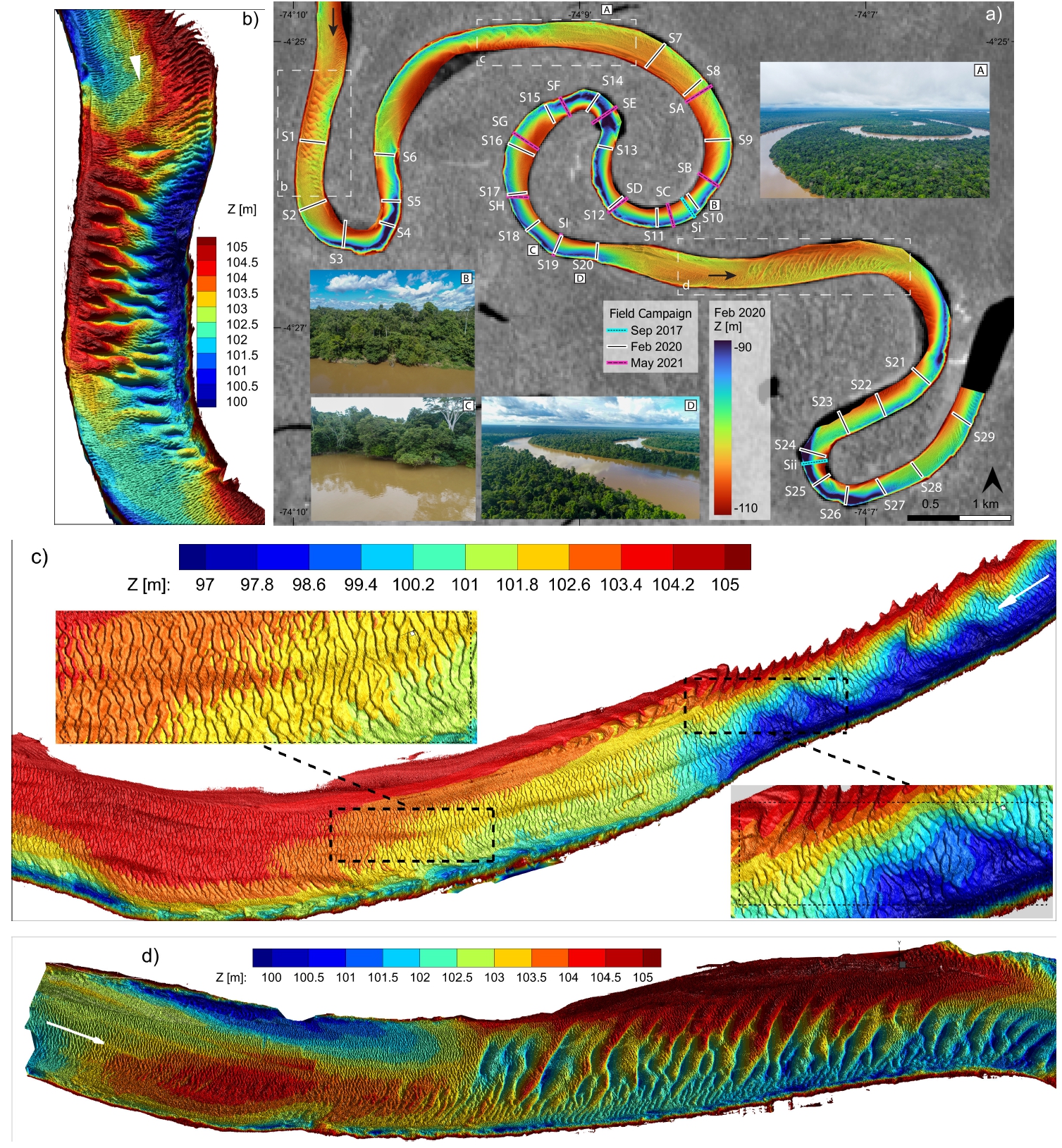Published article: Understanding the hydrogeomorphology of the Tigre River (Peru)

Cover figure: Bed morphology in the Tigre River, Peru. Figure from Abad et al. (2023)
In our publication, “Hydrogeomorphology of Asymmetric Meandering Channels: Experiments and Field Evidence”, we described the three-dimensionality of the water flow and the bed morphology pattern of the Tigre River, very close to its confluence with the Marañon River, Peru.
In the past, the meandering Tigre River has developed several meandering cutoffs and produced oxbow lakes and abundant paleochannels. This area presents 4 high amplitude and sinuosity bends, two oriented upstream and two oriented downstream. The planimetric approach allows an understanding of the differences between hydrodynamics and bed morphodynamics when bends have a specific orientation.
Methodology
We use a combination of remote sensing techniques and hydrogeomorphological measurements (water flows, sediments, and bed morphology) to interpret the physical processes in the Tigre River, very close to its confluence with the Marañón River, Peru.
- Characterization of modern river dynamics: Abad et al (2022), Abad et al (2023), Valverde et al. (2024)
- Characterization of ancient fluvial dynamics: Rojas et al (2023)
Results
Bends in meandering rivers are oriented towards upstream or downstream, and this characteristic defines the complex hydrogeomorphology of the bend. Bends oriented downstream allow the development of depositional (erosional) regions near the inner (outer) bank that are larger than in the case of upstream-oriented bends. Downstream-oriented bends have a higher migration rate than upstream-oriented bends.
The Tigre River was more active in the past than in the modern scenario; therefore, the bedforms are more stable, making it possible to map them three-dimensionally using a multibeam. Moreover, the bedforms in the Tigre River are more developed in reaches of low sinuosity.
Citation
Abad, J. D., Motta, D., Guerrero, L., Paredes, M., Kuroiwa, J. M., & Garcia, M. H. (2023). Hydrogeomorphology of asymmetric meandering channels: Experiments and field evidence. Water Resources Research, 59, e2022WR033904. https://doi.org/10.1029/2022WR033904
Access to the full paper at https://agupubs.onlinelibrary.wiley.com/doi/10.1029/2022WR033904
